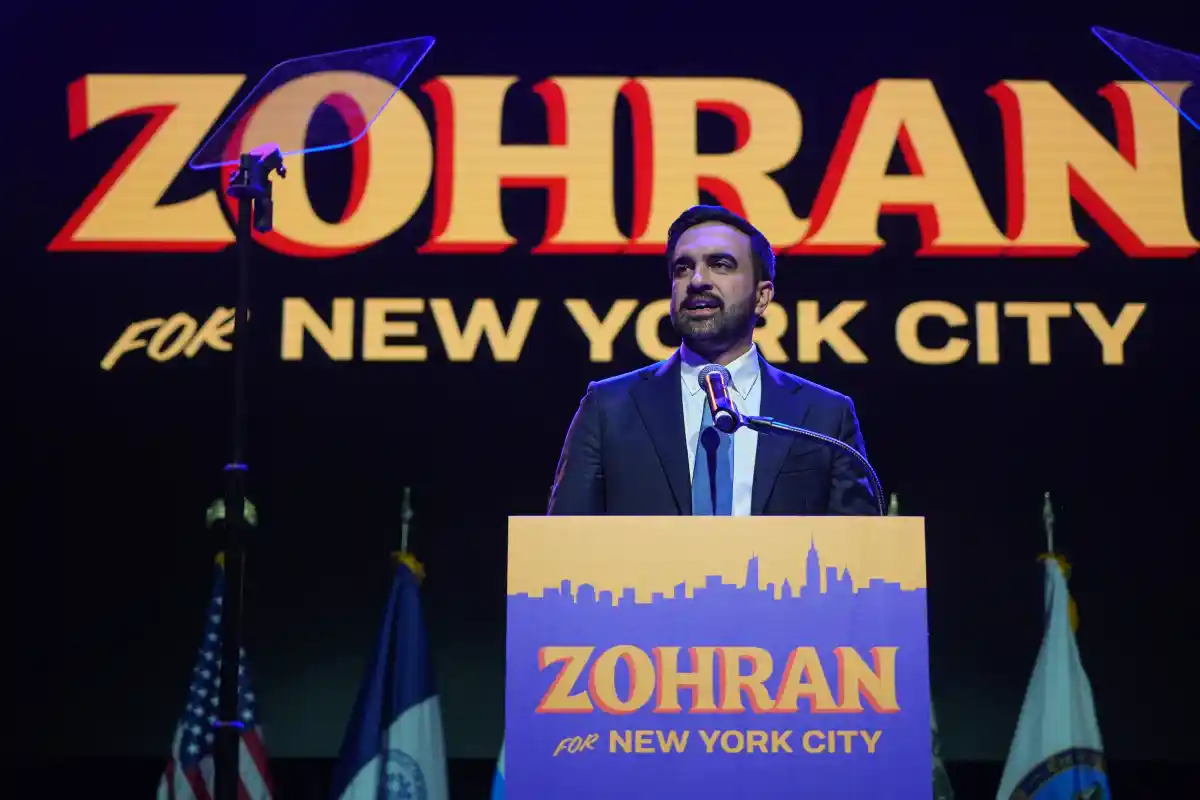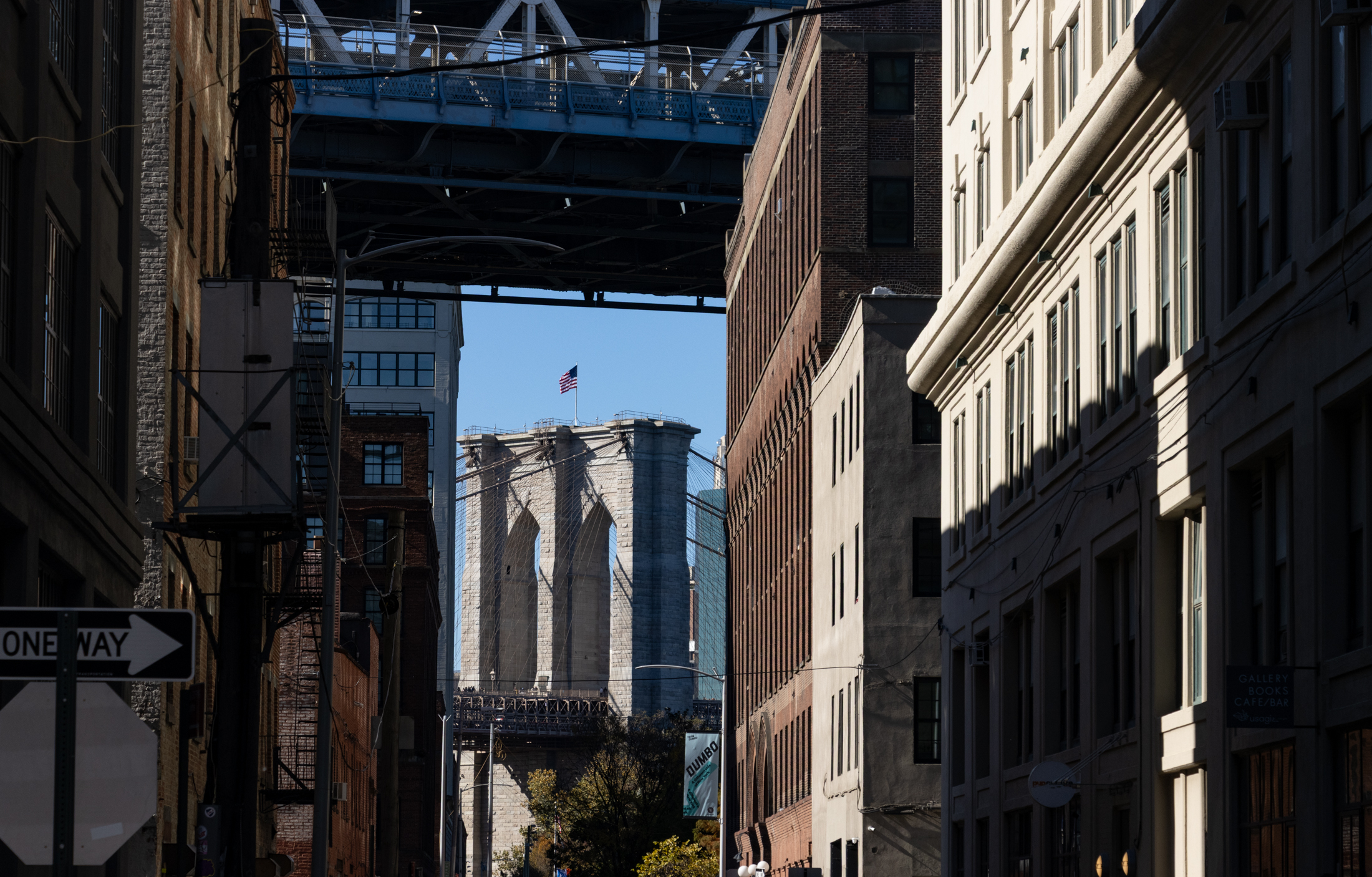Restoring Downtown Brooklyn to Its Former Grandeur
If you didn’t realize downtown Brooklyn was once grand, talk to Bob Furman, founding member of the new group Brooklyn Preservation Council. The Brooklyn Eagle reported on Furman’s hopes for the area. They include raising awareness about the urban fabric that existed there before the Robert Moses-championed Cadman Plaza and Columbus Park replaced some 300…


If you didn’t realize downtown Brooklyn was once grand, talk to Bob Furman, founding member of the new group Brooklyn Preservation Council. The Brooklyn Eagle reported on Furman’s hopes for the area. They include raising awareness about the urban fabric that existed there before the Robert Moses-championed Cadman Plaza and Columbus Park replaced some 300 buildings, including a few neo-classical treasures, in a fit of urban renewal in the post-war years. “While we can’t rebuild the way it used to be, I thought it would be appropriate to commemorate what it once was, he says. I always felt that the Downtown Brooklyn and Cadman Plaza renewals were disasters. [Their] purpose was to reverse the decline of Downtown Brooklyn and Brooklyn Heights, which [they] didn’t do. One building especially missed is the neo-classical Kings County Courthouse, razed and eventually replaced by Brooklyn Law School at Joralemon Street and Boerum Place, made with Tuckahoe marble and designed by Borough Hall’s architect, Gamaliel King. Hopefully the signs Furman hopes to erect, commemorating lost streets and buildings, will help deter us from making the same mistakes today.
Preservationist Looks to Commemorate Downtown Brooklyn of Old [Brooklyn Eagle]
Cadman Plaza. Photo by r5n5.





East River;
You’re a reasonable person,so I’ll respond in kind.
If Brownsotner and Lisa stuck to stories about brownstones and architecture, I wouldn’t go on the attack. Where I have a problem is when she often ventures into lectures on how our city and society should be ordered, and it reveals a mindset that I find quite objectionable, because it is holding back progress in this town. If she uses this platform to speak out, I will provide the critical analysis it needs.
As I keep mentioning, what I find lacking in so much of this discussion is the lack of any economic or historical perspective. People seriously propose putting ship repair facilities in the east river, without doing just a cursory check of the economic feasiablity of such an idea. Lisa touts a report from an advocacy group that shows that development and rezoning led to the loss of 32,000 manufacturing jobs during the Bloomberg years, when a cursory check of the facts shows that NYC has lost HUNDREDS of thousands of manufacturing jobs during the past 50 years, due to the larger macroeconomic trends afoot. Bxgrl tells us that Moses should have poured money into mass transit, which is a statement just completely lacking in any kind of perspective. How exactly are trucks supposed to move goods into and out of this town: by riding on subway tracks? Moreover, she makes this statement without even knowing the history of that era, when funding for mass transit was not to be had.
Here’s an example for folks to consider. In the 1920’s and 30’s, the city of Cincinati spent a fortune building a subway system. You know what happened to it? It never opened. By the time it was ready, the city fathers considered such a form of transportation obsolete, and decided not to sink another penny into it. They diverted all future funding to highways. THIS is the era in which Moses operated, and he worked within these constraints to get things done. I admit he made mistakes, but I’ll tip my hat to him any day as opposed to these Monday-morning quarterbacks who are trying to institute an anti-progressive mindset in this city, a city that once prided itself on the need to build, build, and build some more, to move to the future.
That’s your answer? Some one posted they like Cadman Plaza? Yeah- I see how that blows her argument out of the water.
I’ve wondered also why preservationists are used as whipping posts (see- not just Robert Moses) for the failures of others. Not to bring up a sore point- AY? No matter how many times people say they want progress, but object to the way AY is designed (for very legitimate reasons), people like benson insist the nimbys are single handedly destroying progress. It’s not let’s find a good design for the area, it’s my way or the highway.
You’ve stopped listening. Or maybe you never cared to listen. Everyone has a stake in this city, and frankly the city has a responsibility to ALL of them. Not just the developers, not just the money men, not just the big corporations.
A great historical society is kind of after the fact. It’s not substitute for the real thing. As for Lisa’s statement being a sermon? You’re sounding a little touchy there. Brownstoner started out as a blog for those interested in brownstone Brooklyn. Old brownstones- Jon loves them. Why get on Lisa for posting articles that have to do with historical buildings and Brooklyn history? You go on the attack every other day. How about giving her a break? Don’t like the subject? Don’t read the thread.
Who can argue with the premise that we tore down things in the name of progress that were more successful and beneficial to the city as a whole, than the garbage erected over their rubble? For all Robert Moses accomplished, in many cases the price was too high.
Bxgrl;
After you finish laughing, I refer you to zqori’s post at 10.53 AM,in which he or she expresses their like for Cadman Plaza. I guess the 20 year streak is over.
I will continue to speak out against a mindset that is holding back progress in this city.
I’ve just picked my self up from the floor laughing about the wonders of Cadman Plaza. 20 years in that neighborhood and I never heard anyone say, gee, what a wonderful pedestrian (excuse me….ha ha ha ha…)plaza. Everyone avoided it. On windy days it was the Brooklyn version of the Oklahoma dust bowl, and the totally magnificent memorial is stuck at the end of a scruffy field so as not to get in the way of games of football and soccer. Heaven forbid anyone should be forced to consider what that memorial really means.
Robert Moses was a brilliant man, even visionary but he destroyed neighborhoods and homes and not a few lives to build a now antiquated road system that forms that basis of our traffic congestion problems now. Had we poured as much money into public transportation as we did with roads, we would be in a much better position today. And we would have kept some beautiful architecture. Comparing Grand Army Plaza to Cadman Plaza is laughable. It was never the intention to make it a pedestrian plaza, but a grand entrance to the park. The soldiers and Sailors Monument is a stunning visual statement and one I’m sure some would advocate tearing down to put up a high density office building.
“Well, I don’t think you have to worry about that. With the mindset that you and others promote, NOTHING in the way of great public works goes on in this town anymore.”
That certainly can’t be blamed on preservationists. A glance at the WTC memorial will show you clearly what the real problem is- no clarity, no vision, complete insensitivity to the public, and greed. Keeping the past is not the same as being stuck in place. Long ago we should have figured out how to keep what is worth remembering and building for the future. Masterpieces of architecture (and for a great example of regrets you can hear us still bemoaning the loss of Madison Square garden and Penn Station) affect us in more ways than you realize. They teach us about beauty, craftsmanship, design. They are inspiring, uplifting and expressive of human beings and what we can achieve.
There are no new great public works. I agree. But it’s because we have become a society that supports the banal, the bland and the disneyesque. We’re masters of navel gazing analysis of things our parents generation would have rightfully dismissed as crap. This generation will never build a cathedral, nor an Empire state building. The most likely new monument we’ll get is one to nickels and dimes. By all means lets have the tallest building in the world at the WTC. Instead of a magnificent statement of freedom and strength we’re getting a giant finger. Instead of a powerful and moving memorial to the dead, we’re going to get 2 pools and a park. Not because it’s a fitting tribute, but because no one could conceive of anything truly magnificent.
I’m angry- I’m tired of the attacks on those of us who want to keep the best of our city’s history and being told we’re NIMBY’s or luddites or navel gazers holding back progress. My idea of the future doesn’t include tearing down masterpieces of architecture that were enjoyed by the many for another bland and boring metal and glass box that is “enjoyed” by the few.
Montrose;
Please spare me the lectures. I am not arguing against those who wish to study the past. I happen to have an interest in history too, and that includes architecture.
We already HAVE a great historical society, which has published several fine books of photos of old Brooklyn, much of it centered on downtown. If folks have an interest in this topic, I would heartily recommend that they join the Brooklyn Historical Society and purchase their books, as I have done.
My issue with this particular story and effort is that of perspective and the sermonizing. This mindset, which can also be found the “Forgotten NY” web-site and others, goes to the opposite extreme. They see NOTHING of worth in new projects, and focus incessantly on the mistakes Moses and his kind made. They lose sight of the fact that in any great endeavor, mistakes will be made. They have developed an anti-progessive mindset.
Once again, I refer you to Lisa’s last statement/sermon. It is simply ridiculous. When will these people be satisfied – when we declare every decrepit factory and building in the borough a landmark, that cannot be touched? They are losing perspective, to our detriment. Say what you want about Moses, but the fact is this: since he was pushed out of the scene, NY has not built one great public works project, except for the water tunnel. Well, who needs that – let’s launch another effort to look at the past, even though we already have a great historical society. Ridiculous.
I like Cadman Plaza. There’s a lovely three-days-a-week green market at the south end, and a newly restored park at the north that gets a lot of use by joggers, soccer players, kids, dog walkers, runners, and tourists which stumble off the bridge. It’s surrounded by mostly attractive civic buildings including a post office, library and one or more branches of every possible bank. The middle section (between Johnson and Tillary?) is a bit run down and segregated from the other sections, but it wouldn’t be expensive to spruce it up and connect it better.
Benson, I hardly think that bringing the public’s attention to lost architectural treasures, and the history of any area is worthy of your vitriolic diatribe. Since what is done is done, in the case of the buildings and streetscapes lost here, re-discovering those buildings and streets again is a worthy pursuit, if only to celebrate what was. As a lover of history and good architecture, I run across endless examples of buildings lost over the ages, buildings designed by the famous and the unknown, lost to fire, natural disaster, urban renewal and neglect. We can still appreciate their artistry, design and purpose. We can still learn from them the use of space and form, stylistic trends and how those buildings served the societies they were built for, and how their success or failure can be incorporated into buildings in the future.
As in any history, we learn from our architectural past. It is not a misplaced nostalgia, or a whining about a couple of piles of stone and wood. Mistakes WERE made in many cases, masterpieces torn down for parking lots, or sub-par replacements. Progress is not always made just because something is new, just as everything old is not always worth keeping.
I, for one, would have loved to have seen the buildings lost, and if someone wants to celebrate their existence, more power to them. I would hate to think of Borough Hall and the Post Office gone, and replaced by bland 1950’s crap that would have been replaced yet again 50 years later. A waste of 2 valuable parts of Brooklyn history, and in the case of the PO, it would have been a tragic waste of a masterpiece. I welcome more people interested in the past, and more articles on Brownstoner and the like, bringing that past to our attention.
Is Furman still associated with the Four Borough Preservation whatever, or is he hop-scotching from group to group?